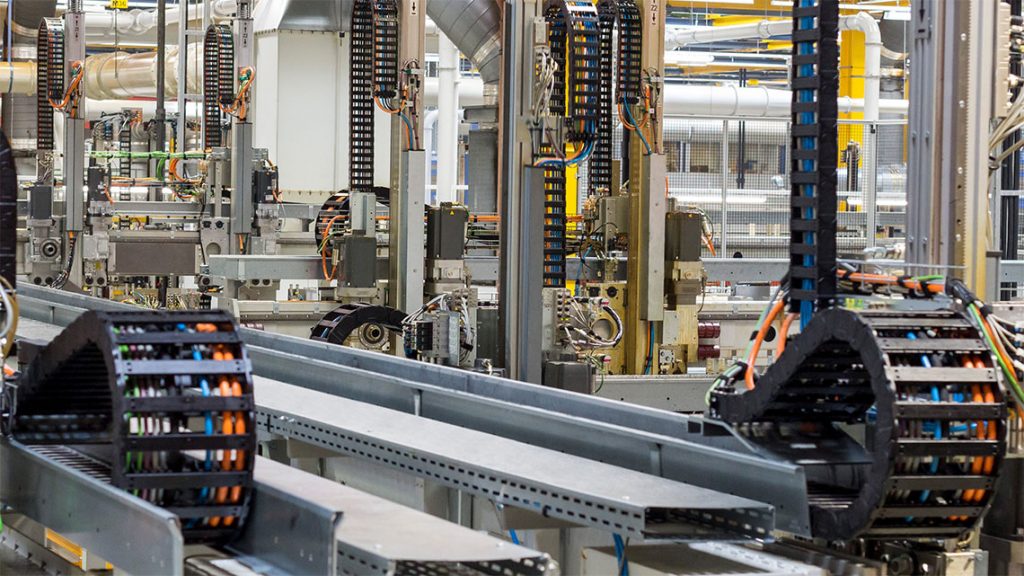This is how quickly you can save money with smart condition monitoring systems
Richard Habering | 8. March 2022
A break-even analysis on the use of igus i.Sense in maintenance
Condition monitoring refers to the regular to continuous recording or monitoring of the condition of a machine (especially for rotating components or moving applications), plant or of a process. The operational benefits for maintenance managers are obvious: maximising production in terms of OEE and increasing the service life of the plant landscape.

However, the financial benefits of Condition Monitoring Systems are often difficult to assess, especially because the initial investment in a modern condition monitoring system does not initially reduce costs, but rather increases them. Therefore, in the next sections, we will look at the financial impact over the entire utilisation period with a break-even analysis based on practical experience in an automotive production hall.
Ready-to-install condition monitoring systems for under EUR 2,000
First of all, the one-off procurement and installation costs for a condition monitoring system such as i.Sense from igus – smart plastics. This can be defined as a ready-to-install complete package for retrofitting an energy supply system of up to 30m travel length directly in the online shop and ordered for less than EUR 2,000. The setup can be done completely on your own with the accompanying operating and installation instructions. Beyond that, no further costs are incurred during the service life:

On the other hand, there is the regular maintenance work that has to be carried out continuously in typical manufacturing plants with several thousand cycles per day. These may include the following examples: changing the oil in a crane, maintaining a manufacturing machine, or monitoring a production facility using measurement technology.1
Since these efforts can be very different per use case, let’s approach it in 3 different scenarios:
- Regular Case – Optimally designed energy supply system with normal capacity utilisation
- Busy Case – Fully utilised production line in 3-shift operation
- Crash Case – Complete failure of the production line
Break-even already reached in the first years of use, even in normal operation
Expenses are generally maintenance costs that are spent on maintaining the operating resources – on upkeep. This includes all costs that keep operating equipment in a serviceable condition.2 For the energy supply on a gantry in a production hall, this can include the following typical efforts in the regular case:
- Weekly inspection of the travel for contamination or objects (each 10 min)
- Monthly check of the cable package and re-calibration of the push/pull forces (a 30 min)
If these expenses are compared with the average costs in the manufacturing industry in Germany of EUR 41.60 for a working hour3, the benefit threshold of an i.Sense system is already reached in the 3rd year of use.
- (10 min/60 x 40 working weeks) x EUR 41.60/h = EUR 277.33
- (30 min/60 x 12 months) x EUR 41.60/h = EUR 249.60
In this regular case, we assume a properly designed and smoothly operating energy supply system. If we now have a production line running under full load in 3-shift operation, we can expect even more expenses:
- Daily visual inspection of the travel (each 3min.)
- Half-yearly inspection of the complete energy supply (each 240min.)
In this busy case, the break-even point for a modern condition monitoring system like i.Sense is reached after just under 1.5 years:

Avoidance of a total failure with i.Sense EC.P can hardly be measured in monetary terms
However, the main advantage of, for e. g., a permanent push/pull force monitoring with i.Sense EC.P has not even been taken into account: namely, the immediate stopping of the system in the event of an abnormal increase in force. This can be caused by any external impact in the form of tools or other objects left lying in the path of the travel. With the emergency stop of the plant and alarming of the person responsible for the machine, immense consequential damages or even total failures can thus be prevented. The occurrence of such a total failure cannot be typically predicted, but in the worst case it will be really expensive. In the automotive industry, one speaks of downtime costs of several thousand euros per minute; one of our customers in the crane industry was even able to avert damage of several tens of thousands of euros. This crash case must therefore be avoided at all costs … even at the expense of a smart condition monitoring system from igus.

Sources:
- https://www.firma.de/rechnungswesen/was-sind-instandhaltungsaufwendungen-definition-und-buchung/
- https://blog.kevox.de/wartung-und-instandhaltung/
- https://www.destatis.de/DE/Presse/Pressemitteilungen/2021/05/PD21_203_624.html;jsessionid=67890BC442B1D367DA6C9C8ECE9750B2.live712
